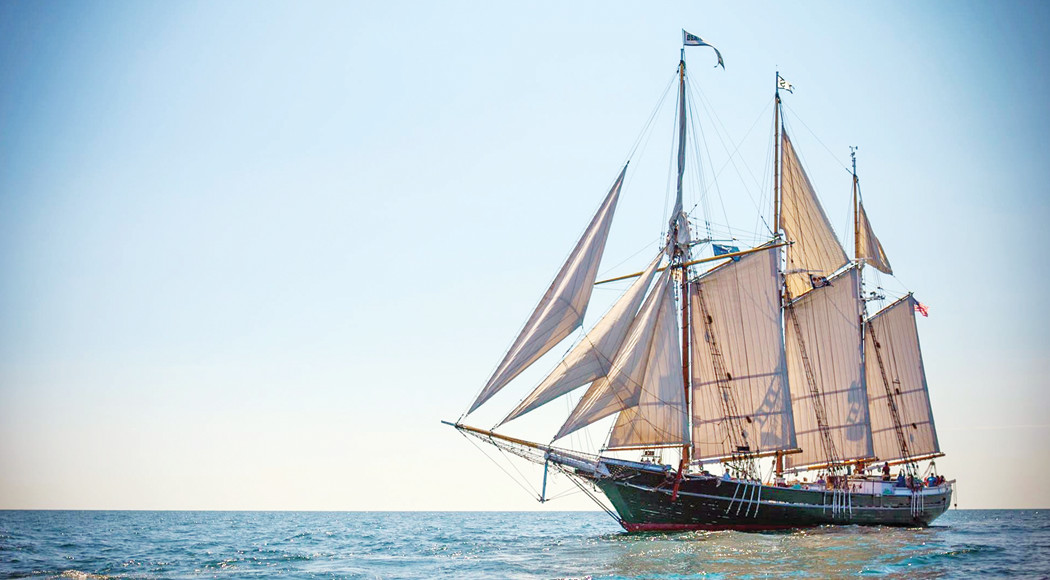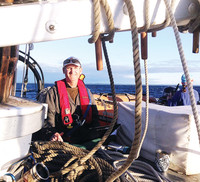Support the Timberjay by making a donation.
Bo knows his boats
Ely teacher spent summer on Great Lakes science ship
ELY – How does a veteran high school science teacher spend his summer vacation?
Bo DeRemee, a 28-year classroom veteran at Memorial High School, spent part of last summer teaching other teachers …
This item is available in full to subscribers.
Attention subscribers
To continue reading, you will need to either log in to your subscriber account, or purchase a new subscription.
If you are a current print subscriber, you can set up a free website account and connect your subscription to it by clicking here.
If you are a digital subscriber with an active, online-only subscription then you already have an account here. Just reset your password if you've not yet logged in to your account on this new site.
Otherwise, click here to view your options for subscribing.
Please log in to continue |
Bo knows his boats
Ely teacher spent summer on Great Lakes science ship
ELY – How does a veteran high school science teacher spend his summer vacation?
Bo DeRemee, a 28-year classroom veteran at Memorial High School, spent part of last summer teaching other teachers and logging water monitoring data, as well as swabbing the deck aboard a Great Lakes tall ship.
He joined other educators from Wisconsin and Minnesota aboard the S/V Denis Sullivan as part of a unique professional development workshop offered by the Great Lakes Sea Grant Network’s Center for Great Lakes Literacy.
The seven-day, six-night workshop was held Aug. 13-19 and focused on science, shipwrecks and sailing aboard the 19th century tall ship replica.
DeRemee spoke to Tuesday Group this week and reminisced about his adventure last summer on the waters of Lake Michigan. “This may be the first time I have spoken to people who have actually graduated,” he said.
He has spent parts of summers for the last several years aboard three different boats. He has participated in science cruises on the Lake Guardian, which sails all of the Great Lakes, as well as the Blue Heron, based out of Duluth, which sails Lake Superior.
Last summer, DeRemee spent a week on Wisconsin’s flagship, the Denis Sullivan. It is believed to be the world’s only replica of a 19th century three-masted Great Lakes schooner, and is based in Milwaukee, Wis. Today, the only schooner of its kind is used for a variety of purposes, including as an educational tool and scientific research station with a focus on environmental issues in relation to the Great Lakes.
DeRemee grew up in southeastern Minnesota, in the only county without a lake in it, and spent his summers in Iowa, not known for much water. “That state has just five lakes,” he said. “Ironically, that is where I honed my sailing skills and developed my love for the water.”
He earned his captain’s license by the time he was 19-years-old and spent time moving boats up and down the Mississippi River. “That obsession or addiction is still with me today and I spend a lot of time on the water here in Ely,” he said.
Being a high school science teacher, DeRemee had the opportunity to become involved with the Center for Great Lakes Literacy, which is organized as part of the Sea Grant program, part of the educational arm of the National Oceanic and Atmospheric Administration.
“There is as much shoreline along the Great Lakes as there is along the entire east coast of the United States,” he said. “The irony is, I’ve never been on salt water.”
His first summer science cruise started in 2009. Funded through the National Science Foundation and the Environmental Protection Agency, he spent a week aboard the Lake Guardian. “These cruises are not to be compared with a Carnival cruise one takes to the Bahamas,” he said.
Just two months ago, DeRemme had a last-minute opportunity to spend a week on the Denis Sullivan. “I applied last spring and was not notified until mid-June. I made some scheduling changes and off I went,” he said.
Part of the mission of the cruise was to promote the new marine sanctuary off the coast of Sheboygan, Wis. “This is a 1,000-square-mile area and the primary reason for the sanctuary is that there are over 40 ship wrecks in the area,” he noted.
Monitoring the waters of the Great Lakes is the primary reason for these scientific cruises. Funding is provided thanks to the Clean Water Act of 1972 and the Great Lakes Water Quality Agreement of 1978.
Sea Grant staff from Minnesota and Wisconsin provided resources for teachers to apply the Great Lakes Literacy Concepts to their own classrooms. The scientific theme of the voyage was to explore the change in the food web of Lake Michigan as a result of invasive species, how Lake Michigan transitioned from a pelagic to benthic-driven food web, and what it means. Aboard ship, the educators gained firsthand experience in freshwater ecology, Great Lakes maritime history and sailing, navigation, the physics of sailing and how the Great Lakes function.
“The ship runs 24 hours a day and we try to get to many areas on the lake,” DeRemee said. “We do a series of sampling of basic lake parameters to give us a base line to see if the lake water is changing and how it is changing. Then we look for why it is changing.”
Students from various schools around the Great Lakes, including high school freshmen from Ely, have a chance to participate in many science experiments. They provided Styrofoam cups that were lowered some 300 yards into the depths of Lake Huron. “A 12-ounce coffee cup is crushed by the pressure depth into something the size of a salt shaker,” he said.
Part of the reason DeRemee participates in the science cruises is to bring the educational opportunity back to his students. “We have to document what we’re teaching to our students, and it is particularly hit hard in the biology classes and some of the physical sciences,” he said. “What we do is a direct connection to the students.”
DeRemee said the collected water chemistry data clearly shows the Great Lakes are warming. “There is still freezing but the depth of the ice and thermal layer depth is changing and showing a gradual warming. This is a fact. The data are there.”
Lake creatures and fish are collected and tested. “Zebra mussels are so 1990s,” DeRemee said. “Now we have his evil cousin, the Quagga mussel. He is much more destructive. We don’t know how we are going to stop it. We might slow it down, but that is about it.”
He noted that Lake Superior’s calcium content is at a level that does not promote the reproduction of the invasive mussel species. “Life does find a way, so it may be just a matter of time,” he said.
In close quarters, participants worked alongside Denis Sullivan crew and shared in components of the voyage, including raising and lowering sails, dropping and pulling up the anchor, swabbing the decks and even cleaning the bathrooms (heads).
He touched briefly on life aboard the sailing ship. “The rope, I mean line, maintenance is very meticulous,” he said. “They have to be coiled in such a perfect way so they play out correctly when the sails are raised. And we actually did have to swab the wooden deck. We climbed down into the holds every hour to check for leaks.”
The Sullivan is very true to a sailing ship from the 1800s, except for the two diesel engines. “The crew is very committed to what they are doing. The sailing life is for vagabonds. Settling down is not in their being,” he said.









